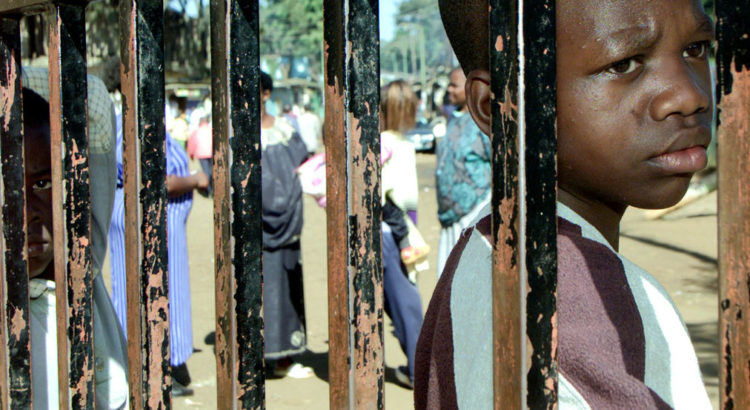África/Kenia/Julio del 2017/Noticias/https://theconversation.com
Kenyan voters are being fed a daily diet of grand promises in the lead up to the country’s national elections. If either of the two main coalitions win power in polls scheduled for August 8, 2017, citizens can look forward to free maternity services, free public secondary school, farm subsidies, lower food prices and much more.
For better or worse, the education sector has been the easy target of numerous campaign promises. Kenya’s two rival political coalitions are both promising free secondary school education if elected. It’s an attractive offer given that it could ease the financial burden of millions of vulnerable families.
The pledge is not without some controversy. The ruling Jubilee Party and the rival National Super Alliance can’t seem to agree over who gave birth to the idea. Each coalition also has its own implementation strategy.
The opposition alliance has the more ambitious goal of implementing free secondary education within a month of being elected. The incumbents on the other hand are bringing forward their timeline to 2018 rather than the initial 2019.
Kenyans are no strangers to education promises. At independence in 1963 the founding president Mzee Jomo Kenyatta promised – but didn’t deliver – free universal primary education. It wasn’t until 2003, four decades later, that the promise finally became a reality.
It’s clear from the pronouncements made by both parties that not a lot of thought preceded the promises they are making and Kenyans are likely to be disappointed. In retrospect, the implementation of free basic education Kenyans reminds us that haphazard decisions have serious ramifications on the education sector and vulnerable members of society.
Already school heads are sounding the alarm bells. They want adequate infrastructure and deployment of more teachers to be in place before there’s a major change in policy.
Free primary school education
Free primary education is thanks to the winning coalition’s 2002 election manifesto. Apart from entrenching primary education as a basic right, the policy is credited with boosting enrolments. But the initiative faced numerous challenges.
There was no time to prepare the schools for the influx of learners just days into Mwai Kibaki’s presidency. School infrastructure was over stretched and the teachers were overworked. In spite of the overall success, moreover, free primary education has yet to reach all school going children.
One immediate effect of the chaos was that some parents opted for low cost private schools, particularly in slum areas. Parents went out in search of smaller classes that are associated with individualised attention and quality education.
Free basic education ended up creating inequalities that are more pronounced for poor households that can’t afford private education.
The current pledge of free secondary education comes smack in the middle of another unfulfilled promise: a free laptop for each pupil joining primary school. Many are still waiting for the Jubilee government to deliver on its 2013 campaign pledge that over a million learners would get free laptops in 2014.
Among the challenges along the way included poor planning, procurement disputes and insecurity. There was also lack of preparedness of public schools in terms of infrastructure development and re-skilling of teachers.
As of 2016, 11,500 pupils had received laptops. But disparity between what has been delivered and the monumental amounts of money allocated or spent is worrying and worth digging into.
Secondary schooling in Kenya
A secondary education subsidy was introduced in 2008 under the national coalition government of President Kibaki and Prime Minister Raila Odinga. The stated aim was to curb high dropout rates by paying Sh10,265 (about USD$100) per student per year towards tuition fees. Parents would have to cater for boarding and uniform requirements.
The subsidy was further increased by about 25% to Sh12,870 in 2014 under President Uhuru Kenyatta. The president has intimated that the increase was in preparation for free secondary education resulting in annual subsidy allocation rising to Sh32 billion.
Kenya’s secondary schools has about 2.72 million learners. This is set to rise dramatically next year when, for the first time, the country plans to achieve 100% transition from primary to secondary school.
With these increasing numbers, making secondary education free at the rate proposed of Sh22,244 (about USD$215) per student per year means that the current budget will double to more than Sh60 billion.
The budget is still likely to increase further if costs related to uniform and lunch are included so as to make secondary education truly free as is being pledged.
Kenyans ought to be questioning whether the country is ready and able to offer free secondary education. In spite of the current subsidy many students are not attending school due to numerous hidden costs and fees associated with school uniform, materials, meals and administration. This is partly because the government has proved unable to enforceofficial school fee guidelines for public schools. The government has also struggled to remit the subsidy on time, making it harder for school managers to meet their obligations.
Planning for free education calls for sobriety to avoid a repeat of past mistakes. All stakeholders should be included in the planning of this major reform and leaders should be held accountable for the promises they make.
Fuente:
https://theconversation.com/why-kenyas-electorate-should-be-wary-of-bold-education-reform-promises-79950
Fuente Imagen:
https://lh3.googleusercontent.com/Bd3hwYglDizyahaRj6_1EZe99YmOS9VI2-NLB3vlAw7tcLA_87Iy4HMUhopObKRLOIPAHg=s85







 Users Today : 3
Users Today : 3 Total Users : 35460266
Total Users : 35460266 Views Today : 4
Views Today : 4 Total views : 3418972
Total views : 3418972